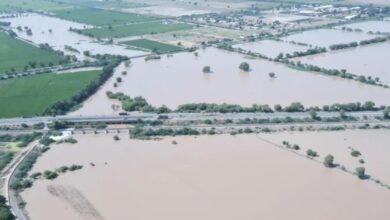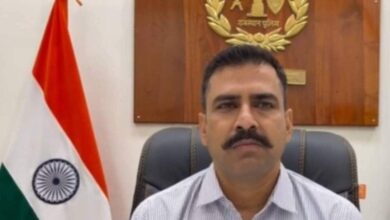Rajasthan
Raikas call for steps to save camels, their herding tradition | Jaipur News


The sight of nearly 100 camels grazing on the outskirts of Bikaner city, feeding on khejri tree leaves and dried grass, and a few turbaned men from the indigenous Raika community keeping an eye on them, may give one the impression that all is well with the humped animals in this part of Rajasthan. But the truth is far from it.
Those camels belong to ICAR-National Research Centre on Camels (NRCC), Bikaner, and the Raika herders have been employed to take care of them. The number of camels with the general population in the region has dwindled rapidly over the years, and the Raikas, known for their ancestral expertise in herding camels, are in distress. As the assembly poll nears, the pastoral community looks up at political parties for promises about steps to save their tradition of rearing and herding camels.
“In both urban and rural parts of Bikaner, riding camels used to be a matter of pride, and we (Raikas) were respected for our special, ancestral skills in herding camels. But the number of camels everywhere in the region is going down, and we fear about losing our skills,” said Bhiya Ram Raika, one of the herders on the pastureland with NRCC’s camels.
Even the Raikas no longer have many camels left with them. “Camels have long been our identity. Camels are the pride of the Raikas. God has specifically blessed us in rearing camels. But motorised vehicles replacing camels in agriculture and transportation of goods, and shrinking pastureland have forced many of us to stop keeping camels,” said Mohan Ram Raika, another herder.
Riding a camel used to be a matter of pride in Bikaner, but no longer, rued Mangi Lal Raika, another herder in the area.
NRCC is working on finding ways to make camels useful in the present times. It has 300 camels of four breeds-Jaisalmeri, Bikaneri, Mewari and Kacchi. “Camel milk is useful in maintaining good health. Research by a doctor has found that the prevalence of diabetes among us Raikas is negligible as we consume camel milk frequently,” said Rughnath Raika, who works with NRCC. A female camel gives between 5 and 7 litres of milk at a time, he said.
In reply to a question in Lok Sabha in December 2022, the Centre informed that 84% of India’s camel population survives in Rajasthan while the country’s camel population has fallen from 4 lakh in 2012 to 2.5 lakh in 2019.
Those camels belong to ICAR-National Research Centre on Camels (NRCC), Bikaner, and the Raika herders have been employed to take care of them. The number of camels with the general population in the region has dwindled rapidly over the years, and the Raikas, known for their ancestral expertise in herding camels, are in distress. As the assembly poll nears, the pastoral community looks up at political parties for promises about steps to save their tradition of rearing and herding camels.
“In both urban and rural parts of Bikaner, riding camels used to be a matter of pride, and we (Raikas) were respected for our special, ancestral skills in herding camels. But the number of camels everywhere in the region is going down, and we fear about losing our skills,” said Bhiya Ram Raika, one of the herders on the pastureland with NRCC’s camels.
Even the Raikas no longer have many camels left with them. “Camels have long been our identity. Camels are the pride of the Raikas. God has specifically blessed us in rearing camels. But motorised vehicles replacing camels in agriculture and transportation of goods, and shrinking pastureland have forced many of us to stop keeping camels,” said Mohan Ram Raika, another herder.
Riding a camel used to be a matter of pride in Bikaner, but no longer, rued Mangi Lal Raika, another herder in the area.
NRCC is working on finding ways to make camels useful in the present times. It has 300 camels of four breeds-Jaisalmeri, Bikaneri, Mewari and Kacchi. “Camel milk is useful in maintaining good health. Research by a doctor has found that the prevalence of diabetes among us Raikas is negligible as we consume camel milk frequently,” said Rughnath Raika, who works with NRCC. A female camel gives between 5 and 7 litres of milk at a time, he said.
In reply to a question in Lok Sabha in December 2022, the Centre informed that 84% of India’s camel population survives in Rajasthan while the country’s camel population has fallen from 4 lakh in 2012 to 2.5 lakh in 2019.




